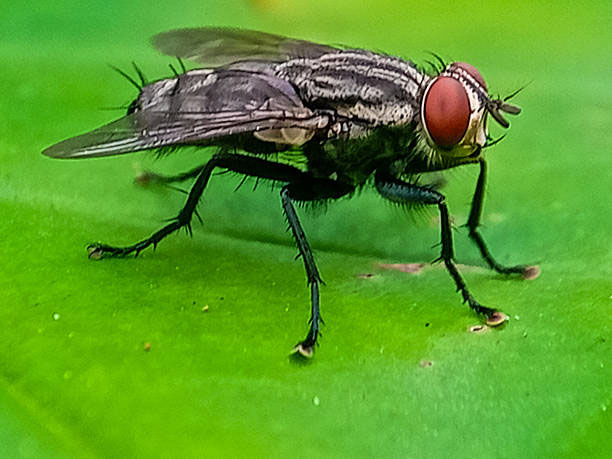(Edinburg, TX, June 18, 2025) – U.S. Secretary of Agriculture Brooke L. Rollins this morning launched an $8.5 million sterile New World screwworm (NWS) fly dispersal facility in South Texas and announced a sweeping five-pronged plan to enhance USDA’s already robust ability to detect, control, and eliminate this pest. These urgent actions are necessary to finish the fight against NWS and protect the United States.
NWS is a devastating pest that causes serious and often deadly damage to livestock, wildlife, pets, and in rare cases, humans. While NWS has been eradicated from the United States for decades, recent detections in Mexico as far north as Oaxaca and Veracruz, about 700 miles away from the U.S. border, led to the immediate suspension of live cattle, horse, and bison imports through U.S. ports of entry along the southern border on May 11, 2025.
“The United States has defeated NWS before and we will do it again,” said Secretary Rollins. “We do not take lightly the threat NWS poses to our livestock industry, our economy, and our food supply chain. The United States government will use all resources at its disposal to push back NWS, and today’s announcement of a domestic strategy to bolster our border defenses is just the beginning. We have the proven tools, strong domestic and international partnerships, and the grit needed to win this battle.”
Following the dispersal facility groundbreaking at Moore Air Base, Secretary Rollins will meet with APHIS’s cattle fever tick riders along the Rio Grande River. The Secretary will see firsthand the critical role tick riders provide for identifying wildlife and preventing the spread of wild disease. In the event NWS advances northward into the U.S., these tick riders will play a crucial role in spotting and combatting this pest.
Key Facets of USDA’s Five-Pronged Plan to Address New World Screwworm
- Stop the Pest from Spreading in Mexico and Ensure We Are Full Partners in Eradication
- USDA’s recent $21 million expenditure went toward renovating an existing fruit fly production facility in Metapa, Mexico, which will provide an additional 60-100 million sterile flies a week to stop the spread, on top of the over 100 million already produced in Panama. This will result in at least 160 million flies per week.
- Over the last two weeks, USDA conducted a robust, in-person audit of Mexico’s animal health controls and will maintain close continual monitoring of these aspects moving forward and will make continuous improvements. These in-person visits have allowed a unique opportunity for APHIS to see first-hand the challenges and opportunities in Mexico toward combating NWS.
- USDA is working closely with Mexico to improve its surveillance and detection of NWS, which includes but is not limited to regularly providing traps, lures, and technical expertise to Mexico.
- Protect the U.S. Border at All Costs
- USDA will support Mexico’s strategic trapping along our shared border and ensure we receive regular reporting as an early warning intervention.
- USDA will escalate communications and public outreach along the U.S.-Mexico border to create a “barrier zone of vigilance” and boost as close to real time as possible awareness of this pest.
- APHIS cattle fever tick riders in collaboration with U.S. Customs & Border Protection and with state partners will intercept and treat stray and illegally introduced livestock.
- Maximize Our Readiness
- USDA will partner with state animal health officials to update and finalize emergency management plans and support federal, state, and local responders in training on and practicing for a potential response.
- USDA will ensure we have sufficient NWS treatments and will work to remove any federal regulatory hurdles for their use.
- Take the Fight to the Screwworm
- Because sterile NWS flies are one of the most important and proven tools we have for eradicating the pest, USDA will immediately begin building a sterile insect dispersal facility at Moore Air Base, set to be completed in 2025. This facility will have the capability to disperse sterile flies in Northern Mexico.
- USDA is exploring all options to eradicate NWS, which includes potential expenditures in new technologies, new science, including possible plans to move forward with the design process of a domestic sterile fly production facility to compliment the new dispersal facility at Moore Air Base which has also been identified as the proposed location. The facility could boost domestic sterile fly production by up to 300 million flies per week and could complement current production that already exists in Panama and Mexico.
- Innovate Our Way to Eradication
- USDA is pursuing innovative research to improve sterile insect technology, exploring development of better traps and lures, exploring next generation NWS treatments, and assessing the potential use and practicality of additional strains or genetically modified versions of the pest as well as e-beam and other radiation technology for the production of sterile flies.
- USDA will strengthen partnerships with land-grant universities in border states such as Texas, Arizona and New Mexico to facilitate local training, trap deployment, surveillance validation, and stakeholder outreach as an initial manner.
Additionally, to solicit input from stakeholders and to best inform the finalization of future plans, USDA will hold four public listening sessions to get feedback on the following topics: sterile fly production technology, eradication tools and technologies aside from sterile fly production, the benefits and barriers including timelines and costs of enhanced domestic vs international sterile fly production, and other innovative ideas. The Department of Agriculture has and remains committed to working in close coordination with our federal, state, local and private sector partners to defeat this pest once and for all.










